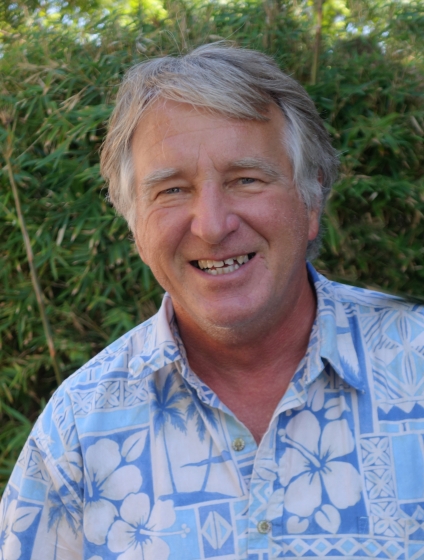Hexavalent Chromium in Groundwater: At the Interface between Science, Regulators, Stakeholders, and the Hinkley Community

In this real-world, lively presentation, Dr. John Izbicki shows us how an American community thrust between uncertainty, regulation, and corporate stakeholders struggled to untangle natural sources of contaminants from anthropogenic sources, using tools from geology, geochemistry and hydrology; the presentation discusses the Hinkley Cr(VI) contamination site made public by the largest lawsuit of its kind in American history and the Academy Award-winning movie Erin Brokovich.
—Trish Holden, Professor, Bren School
This seminar will be presented in person only; there will be no live remote viewing available. Please join us in Bren Hall 1414.
ABSTRACT
The Pacific Gas and Electric Company (PG&E) Hinkley compressor station, in the Mojave Desert, 80 miles east of Los Angeles, California, is used to compress natural gas as it is transported through a pipeline from Texas to California. Between 1952 and 1964, cooling water treated with a compound containing Cr(VI) to prevent corrosion of machinery within the compressor station was discharged to unlined ponds and released to groundwater. In 1998, Cr(VI) contamination at the site resulted in a $333 million legal settlement, at the time the largest of its kind in US history, that gained notoriety in the movie Erin Brockovich. As late as 2015, the extent of anthropogenic Cr(VI) released from the Hinkley compressor station was uncertain. The USGS was requested by the Lahontan Regional Water Quality Control Board (RWQCB) to determine the extent of anthropogenic Cr(VI) in groundwater and to estimate scientifically-defensible Cr(VI) background concentrations that will be used by the Lahontan RWQCB to manage cleanup at the site. Input to the study was provided by a Technical Working Group (TWG) composed of community members, the Lahontan RWQCB, the Independent Review Panel Manager, PG&E, and consultants for PG&E. To help Hinkley community members follow and participate in study progress, a summative scale was developed from data collected as part of this study. The scale consisted of eight questions addressing geology, hydrology, and geochemistry at the site that required binary (yes or no) answers for more than 100 sampled wells. The questions provided (1) a transparent framework for data interpretation in which all stakeholders participated; (2) unbiased interpretation of data traceable to numerical measurements; (3) a framework in which geologic, hydrologic, and geochemical data could be interpreted collectively; and (4) a framework to consolidate different types of data into a simple, easy-to-understand format. This presentation describes study results and collaboration with the TWG and the Hinkley community. Technical results of the study are available in Izbicki, 2023, https://doi.org/10.3133/pp1885.
BIO
John Izbicki worked for the U.S. Geological Survey for more than 40 years in Maryland, Massachusetts, and California. John retired in 2021 but continues to work for the USGS as a part-time annuitant. In 2000, while working for the USGS, John obtained his Ph.D. in Soil Physics from University of California, Riverside. As part of the California Water Science Center, John’s studies have focused on understanding the physical hydrology of coastal and desert aquifer systems primarily through the application of chemical, isotopic, and microbial tracers. Recent work included studies of managed aquifer recharge, trace-element occurrence in desert aquifers, submarine groundwater discharge, and bacterial source identification in urban streams and near-shore ocean water. John has worked on natural hexavalent chromium occurrence in groundwater in the Mojave Desert for more than 25 years and has worked at the Hinkley site from 2015 to 2022. Dr. Izbicki holds several patents for well-bore flow and sample collection equipment and associated techniques and has more than 100 peer-reviewed publications. In 2015, John was the California Groundwater Resources Association David Keith Todd distinguished speaker and was awarded the organizations Lifetime Achievement Award for exemplary contributions to the groundwater industry. John has served as an adjunct professor at San Diego State University and has worked internationally for the International Atomic Energy Agency, and the Chinese, Indian, and Greek governments. Since his retirement John has served on numerous expert panels helping to guide the work of others.